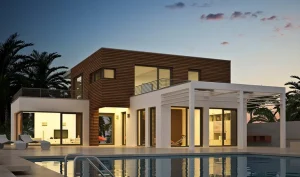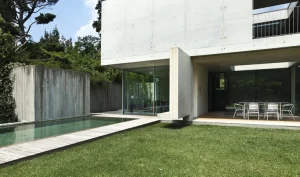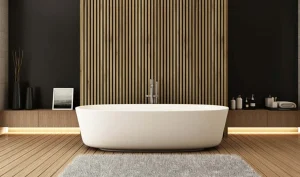Designing ultimate residential buildings involves a comprehensive approach that goes beyond mere aesthetics, considering functionality, sustainability, innovation, and the overall well-being of the inhabitants. Ultimate designs in residential buildings aim to create spaces that seamlessly blend luxury, comfort, and practicality. Here are key aspects to consider in achieving ultimate designs for residential buildings:
- Architectural Excellence:
- Striking Architecture: Incorporate innovative and visually appealing architectural elements that set the building apart. This could include unique facades, captivating entrances, and the thoughtful use of materials.
- Functional Layout: Optimize the use of space with a layout that enhances both aesthetics and functionality. Consider open floor plans, ample natural light, and a seamless flow between different living areas.
- Luxurious Interiors:
- High-End Materials: Use premium materials for interior finishes, such as marble, granite, hardwood, and high-quality metals. These materials contribute to a sense of luxury and sophistication.
- Custom Design: Integrate custom-designed furniture, fixtures, and built-in elements to add a personalized touch and maximize the use of available space.
- Smart Home Integration:
- Incorporate state-of-the-art smart home technology for ultimate convenience and efficiency. Smart lighting, security systems, climate control, and integrated entertainment systems can enhance the living experience.
- Consider incorporating sustainable and energy-efficient technologies to align with modern environmental standards.
- Spa-Like Retreats:
- Design bathrooms and bedrooms as spa-like retreats with luxurious features such as high-end fixtures, soaking tubs, spacious showers, and walk-in closets. Create a sense of relaxation and indulgence within the private spaces of the home.
- Outdoor Living Spaces:
- Extend the living spaces to the outdoors with well-designed and functional outdoor areas. This could include landscaped gardens, patios, decks, and possibly a pool or a private courtyard.
- Implementing seamless indoor-outdoor transitions through large glass doors or sliding walls enhances the overall living experience.
- Environmental Sustainability:
- Integrate sustainable design practices to minimize the environmental impact of the building. This includes energy-efficient appliances, green roofs, solar panels, and water-saving technologies.
- Incorporate eco-friendly materials and construction methods to create a residence that aligns with modern environmental consciousness.
- Community Integration:
- Design residential buildings that foster a sense of community. Incorporate communal spaces, such as shared gardens, rooftop terraces, or community lounges, to encourage social interaction among residents.
- Consider mixed-use developments that integrate residential, commercial, and recreational spaces, creating a holistic living experience.
- Art and Culture Integration:
- Showcase art and cultural elements within the building design. This could include curated art installations, sculpture gardens, or spaces designated for cultural events, contributing to a vibrant and enriched living environment.
- Wellness Design:
- Implement wellness-focused design principles, such as ample natural light, good air quality, and spaces that promote physical activity. Consider incorporating fitness centers, meditation spaces, or wellness rooms within the residential complex.
Ultimate designs in residential buildings aspire to create spaces that not only meet the functional needs of residents but also elevate their quality of life. These designs integrate the latest technologies, sustainable practices, and luxurious elements to provide a holistic and unparalleled living experience.



